How to Control Grey Leaf Spot in your Lawn
Grey Leaf Spot is a fungal disease that can affect both grassy and broadleaf plants. The disease is often a problem during wet and humid spring weather. Lawns infected with ...

Just as its name implies, Take-all Patch takes it all, killing off the roots, runner and leaves, and leaving unsightly dead patches in your lawn.
In this article, we look at ways to avoid this destructive lawn disease, and keep your lawn looking a million bucks.
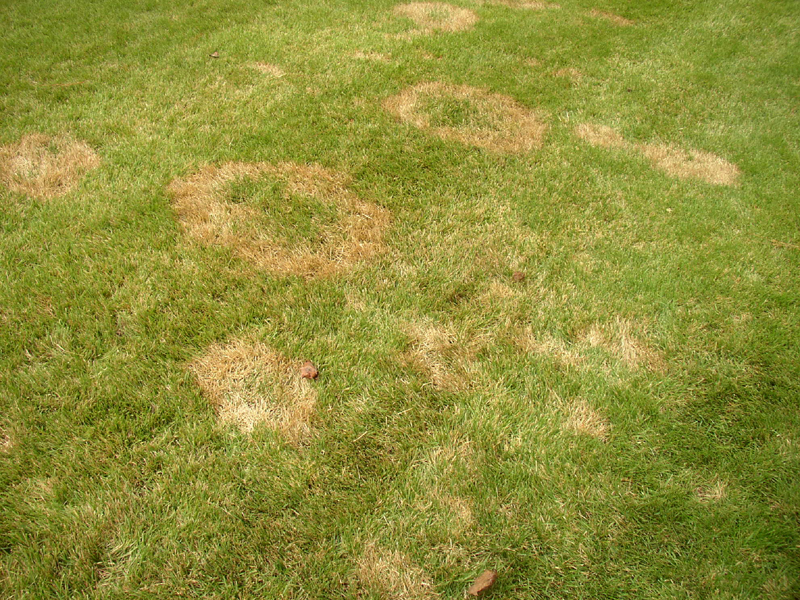 Take-all Patch is a fungal disease that affects cool season grasses, most commonly Bent grass varieties.
Take-all Patch is a fungal disease that affects cool season grasses, most commonly Bent grass varieties.
Formerly known as Ophiobolus Patch, it usually infects your lawn during the cooler months, but does not become evident until the weather warms up. It spreads from plant to plant by growing over roots and rhizomes, and can also spread via contaminated equipment.
Take-all Patch disease is caused by Gaeumannomyces graminis var. graminis, a fungus that establishes itself in lawn debris during the winter months. When the weather warms up, the fungus becomes more active, causing the formation of reddish-brown patches in the lawn that can grow to one metre in diameter. Take-all Patch is very destructive, and will cause the affected areas of lawn to die off.
Thatch (the build up of dead organic matter in your lawn) and poor drainage can increase the risk of Take-all Patch infection. The disease also thrives in light texture soils with low fertility and organic content, and soil pH above 5.5.
Take-all Patch disease gets its name from the characteristic patches or rings of reddish leaves that it produces. These patches can vary in size, but they will eventually turn brown as the grass dies.
Take-all Patch is sometimes mistaken for Dollar Spot Disease or Fusarium Patch, but there are a few key differences. First, Take-all Patch tends to start out as a ring, and as the grass dies off, weeds may begin to take over the centre of the ring. Once the grass is dead, it may turn grey-black as it decomposes. This decomposition process can release spores into the air, spreading the disease to other parts of your lawn.
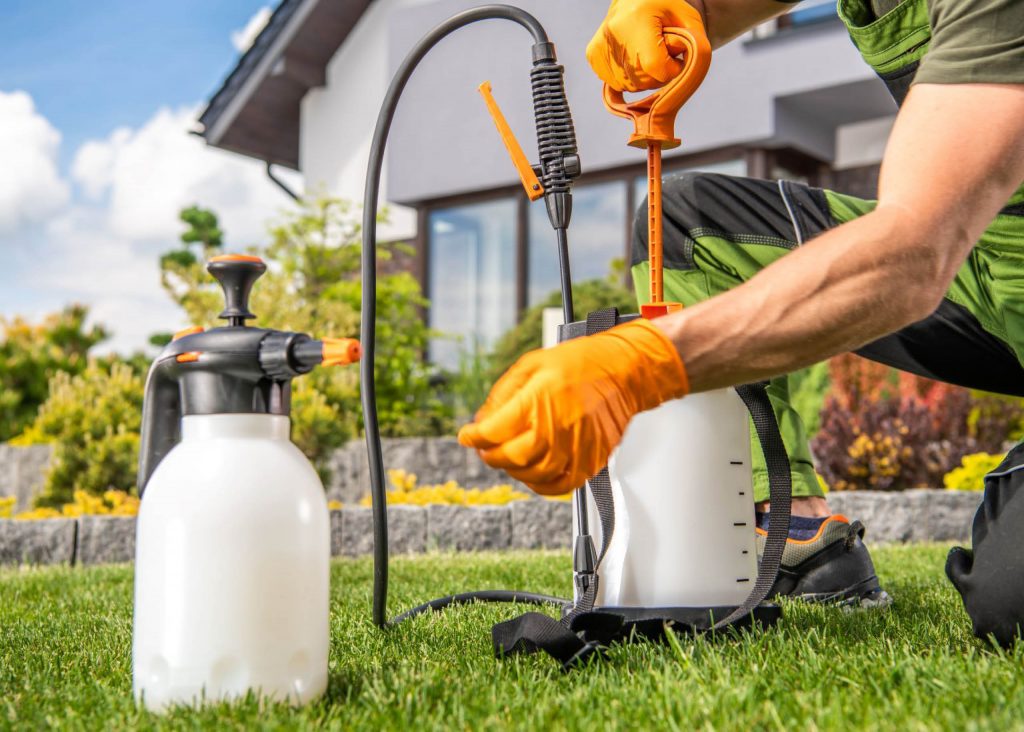 By the time the disease starts to appear, there’s a good chance that it has already killed off the affected grass, so your best treatment strategy is to slow the spreading and prevent further damage.
By the time the disease starts to appear, there’s a good chance that it has already killed off the affected grass, so your best treatment strategy is to slow the spreading and prevent further damage.
Fungicides are effective against Take-all Patch, and can also help to speed up recovery.
Best control with fungicides occurs when they are applied preventatively in mid-autumn to early winter when soil temperatures are below 16°C. Chronic Take-all Patch may require further preventative applications in spring.
Fungicide may be applied in early summer, once the grass starts to brown. This will not save the affected grass but will help speed up recovery.
Further treatment measures include dethatching your lawn, raking any dead material, and removing any affected areas of your lawn to prevent reinfection. Once removed, you should aim to oversow the area with more tolerant grass varieties, and apply acidifying fertilisers to reduce the soil pH.
Prevention is key to avoiding Take-all Patch, as it tends to take hold in lawns that are in poor condition. Regular mowing, at the correct height, will reduce the amount of organic material that will accumulate on the surface of your lawn.
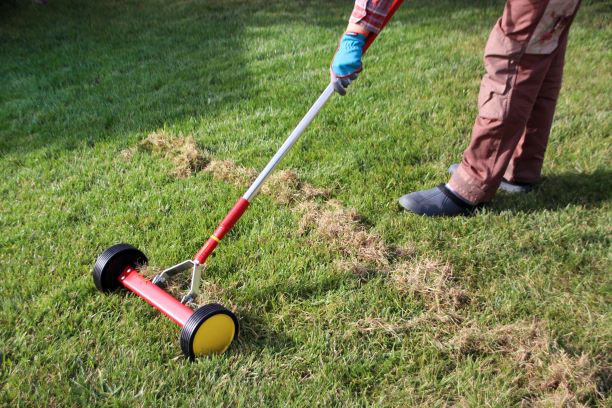 Regular dethatching of your lawn will help reduce any waterlogging or aeration issues, which can encourage fungal growth. You should also keep your lawn well fed, and manage any weeds as they appear.
Regular dethatching of your lawn will help reduce any waterlogging or aeration issues, which can encourage fungal growth. You should also keep your lawn well fed, and manage any weeds as they appear.
Soils that are deficient in manganese are believed to be more susceptible to Take-all Patch, so if you suspect that your lawn may be deficient in manganese, apply a treatment of manganese sulphate in spring.
Maintaining a soil pH between 5.5 and 6.0 can also reduce the likelihood of Take-all patch developing. Minimise the use of lime or nitrate forms of nitrogen, as they can encourage the disease.
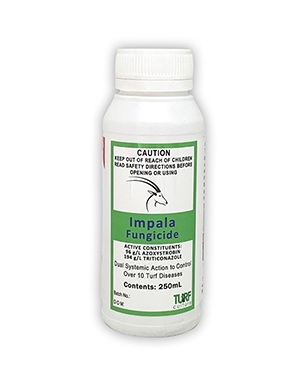
Impala Fungicide is a Broad-Spectrum systemic control liquid for 11 major turf diseases, gives broad spectrum control of 10 major turf diseases, including Anthracnose, Brown Patch, Dollar Spot and Take-all Patch.
Impala Fungicide contains the active ingredients Triticonazole (194g/L) and Azoxystrobin (96g/L) and works by attacking and controlling turf diseases at multiple stages of their development (early, developing, or full-blown infestations). Impala is suitable for use on Kikuyu, Couch, Zoysia and Buffalo grasses.
SHOP NOW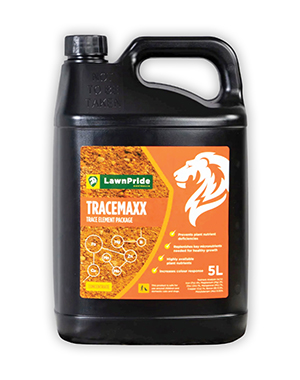
LawnPride TraceMaxx 5L Concentrate provides the complete package of the 9 essential Trace Element nutrients that aid in preventing plant nutrient deficiencies. It also replenishes key micronutrients, including manganese, that are needed to enhance lawn growth.
SHOP NOWTake-all Patch is a destructive fungal disease, which can kill off your lawn if left untreated. As it thrives in poorly managed lawns, the best line of defence against Take-all Patch is to keep your lawns in good health, and treat the problem preventatively.
For more information on suitable products to manage your lawn health, visit myhomeTURF’s online store.